After two decades of trying to sort backcountry skis, boots and bindings, we’ve finally settled on three categories: free, sport and speed touring. On the heavy end of the spectrum sits the 50/50 resort/backcountry free touring gear. These are the skis lined with sheets of metal, four-buckle boots and DIN-certified bindings. Opposite free touring is the uphill-focused, skimo-inspired speed touring category. The skis are less than 90 millimeters underfoot, both the boots and skis hover right around 2,000 grams and the bindings don’t have brakes. In the middle sits sport touring, the jacks of all trades that mix weight-saving tech with downhill performance. Think boots with equally progressive flexes and ranges of motion, tech bindings with generous elastic travel and carbon laminates paired with vertical sidewalls. Some products bridge two categories, like four-buckle boots with a 65-degree range of motion or 3,000-gram skis that are best for dad turns. —Betsy Manero
Categories
Free Tour: Downhill Performance, Durable, Heavy
Völkl Blaze 114
volkl.com | $750 | 3,990g (184) | 154/114/136 | 176, 184, 192

In a year where midfat skis reigned supreme, the brand-new Blaze 114 comes in 7 millimeters wider than any other Editors’ Choice winner. “Me amore. These skis make me faster and I love them!” summarized a language-confused tester of the German ski.
A sustainable wood core, certified by the Forest Stewardship Council, is mainly lightweight poplar with heavier-duty beech in weight bearing areas underfoot and along vertical sidewalls. “Hybrid wood core sure adds spring to every bounce and turn,” a free touring ripper commented. Complementing the core, a titanal mounting plate increases durability and two foam stringers made from recycled plastic bottles run the length of the ski to cut weight. Pair that with recycled base materials, and the Blaze 114 matches its topsheet as a green ski.
Sustainability doesn’t mean anything without performance, and our testers made it clear this fatty was more than just a powder pig. “For those who charge hard, it’s an uncompromising terrain eater,” a hard-to-please tester said. Another noted a rubber layer in the rockered tip and tail and subtle camber underfoot, saying, “Suspension tip and tail or whatever it is, I noticed the damp and smooth platform underfoot.” An exaggerated 3-D radius sidecut—extra wide tips and tails even for a 114 ski—creates multiple turn types by changing radii based on the amount of edge contact. “For someone who desires smooth, perfect turns around every corner,” one smaller tester recommended. A young racer said, “In soft snow and pow conditions this ski is on dance party mode.”
Where to buy
Salomon QST Echo 106
salomon.com | $800 | 3,520g (181) | 139/106/126 | 157, 165, 173, 181, 189

The biggest ding against Salomon’s QST line has been the weight. Cody Townsend shared this critique and collaborated with Salomon on the QST Echo 106, which comes out of the same press as the QST 106 and uses lighter core materials.
The Echo keeps the damping cork the QST line is known for but loses the metal binding mount. Instead, it adds karuba stringers on the outside of the poplar core. The way the two woods fit together keeps the denser poplar in line with where binding screws are inserted for additional hold. A layer of fiberglass sits below the core and inset basalt stringers run along the top. The colorful, semivertical sidewalls are recycled ABS plastic. According to one tester, this construction has an “even flex from tip to tail.”
Testers under 5’4” complained about slow turn initiation and a stiff tail, but taller testers didn’t find either a problem. “Damp, easy turn initiation and smooth blend of rocker and camber made for a very versatile ski in a variety of conditions,” said a 6’3” Wasatch shredder after a few weeks on the 189 length. Tester also found the new materials to be effective. “Lightweight for touring missions and can handle almost anything. It was built to be light on the ascent and playful and fun on the decent,” a Colorado-based sledneck raved. Even gram-conscientious testers were impressed, with one calling them “a solid 50/50 choice for resort/b.c. adventures. A real contender for a one-ski quiver in places with a deep snowpack.”
Where to buy
Stereo Skis Wolf MK5
stereoskis.com | $1,000 | 3,389g (183) | 135/107/124 | 179, 183, 188

Norwegian brand Stereo Skis brings an apex predator to the backcountry this year with the Wolf MK 5. “A one-ski quiver for someone who wants to freeride tour,” one tester praised. “This is an awesome Norwegian ski that would holdup to all day use and abuse,” echoed another. A hard-charging tester confirmed this light, high-performance ski to be “built for serious business at half the weight.”
Deconstructed, the ski has a wood core—a blend of strong but light karuba and poplar. The wood is reinforced by light tri-axial, pre-preg (pre-glue infused) fiberglass (a lighter laminate because no wet glue is needed during construction). “Something has to be creating the unique light/stable combination,” one tester said. According to Stereo Skis, that something is the aviation-grade fiberglass. Per their designers, this material provides stiffness and strength from multiple angles thanks to the axes on which it was woven—think torsional stiffness—which is reinforced with two carbon stringers. The end result: “A responsive yet damp daily driver,” according to one tester.
While the stable construction gives confidence on the descent, the Wolf MK 5 won’t leave your legs beat after a long approach. “A single touring ski for all conditions,” described a tester. Elliptical tip rocker with camber and tail rocker offers float, smooth flex and playfulness. There was some agreement that the tips could chatter in firmer snow but that had no bearing on performance. “The Wolf charges and attacks the fall line in a variety of conditions,” summarized a precision-focused tester.
Where to buy
Blizzard Hustle 10
blizzard-tecnica.com | $800 | 3,560g (180) | 133/102/122 | 156, 164, 172, 180, 188

When Austrian race tech meets free touring construction, you get the Hustle. Where exactly this ski falls on the carving-to-sending spectrum was up for debate among testers. A race coach claimed these are best for “making turns and looking like Mikaela Schiffrin,” while her freeride counterpart called them “a do-it-all ski that is fairly lightweight for freeride backcountry.”
Under the orange topsheet, the Hustle 10 returns unchanged in its sophomore year. In the core, Blizzard uses beech underfoot (stability), poplar in the tip and tail (playfulness) and paulownia sprinkled throughout (weight savings). “Traditional sidewall and the TrueBlend woodcore create a very stable and predictable platform,” a California-based tester quipped. A titanal mounting plate is topped with a tapered sheet of carbon—which Blizzard calls Carbon DTR and one tester said added “strength and dampness”—and more carbon is pressed into the tip and the tail.
A GS-inspired camber pocket transitions to a freeride rocker profile in the front and rear—the same one that can be found in Blizzard’s heavy-metal, freeride-specific Rustler series. A Vermonter called the 17.5-meter turning radius “a lovely sidecut profile,” and a Montana sledneck summed them up as, “for someone who loves the Rustler but wants a lighter, easier option.”
By the end of the week, testers hadn’t come to an agreement on if these skis are a race- or freeride-inspired touring option. Perhaps a tester who transitioned from gate bashing to cliff dropping put it best when he said, “This is a responsive, everyday touring ski that wants you to push faster and harder.”
Where to buy
Voilé Charger Ace
voile.com | $950 | 3,182g (178) | 140/106/124 | 157, 164, 171, 178, 185

Voilé’s Charger series has filled the company’s trophy case since its first Editors’ Choice award in 2011. This year, Voilé adds more hardware with the Ace, which maintains the easy turnability of previous iterations while adding a few higher gears. “These Chargers charge better than any van life battery kit. Dirty hippies, get a home!” a home-owning tester quipped.
A tester who was at the 2011 Gear Test judged this latest Charger as “race ski performance built into a touring class ski.” The carvability comes from a half-capped construction (a first for Voilé), a maple veneer mounting plate and a long camber pocket. The snow contact zone extends to the flat tail but is balanced by a rockered tip. A look under the plain white topsheets reveals layers of triaxial fiberglass and carbon stringers encasing the paulownia core.
Most testers found the Ace Charger excelled in short- to medium-radius turns, but those pushing 200 pounds were able to drive a long-radius carve as well. Across the size spectrum, testers noted versatile performance in any conditions. “These skis are a blast in soft powder with a surfy feel,” a Wasatch dawn patroller said. “They handle chop and crud decently, only getting knocked around where you’d expect them.” Her touring partner added they are best for intermediate to advanced skiers. “Paddle out deep, smack the lip and surf the pow,” he concluded.
Where to buy
Nordica Santa Ana 104 Unlimited
nordica.com | $850 | 3,270g (172) | 134/104/123 | 158, 165, 172, 179

The women at our test were stoked with Nordica’s decision to leave the Santa Ana 104 Unlimited construction the same as its male brethren, albeit in smaller sizes. “Only difference between the men’s and women’s—the topsheet!” an excited freerider exclaimed. Similar to its brother—which won an Editors’ Choice last season—this ski amplified the descent. An eccentric tester said, “Versatility to handle any snow condition while maximizing the poppy, let ’em rip fun factor.”
A touring spinoff of Nordica’s Santa Ana series, the Unlimited gains a 104 width for the upcoming season, but its construction matches the narrower models in the line (88 and 93). A poplar and beech core is combined with Nordica’s Carbon Chassis LT—a rubbery, elastic polymer sandwiched by carbon-infused fiberglass layers—for a damp, lightweight build, per Nordica. While some testers were skeptical of how much weight the construction saved, the damping was undeniable. “Ladies that love to ski pow and charge chunder will love these,” one tester said. To shave more grams, the wood core is tapered through the tip, limiting the amount of heavy plastic used and helping keep the tips from submarining—likely one of the reasons the Unlimited scored well in soft snow performance.
“A one-hit wonder for those without a quiver,” a hard charger said. A tester preferring a controlled style found the skis performed well in technical terrain: “Active and lively with a preference for short, quick turns,” she said. “Super nimble through trees.” Testers suggested pairing Nordica’s Unlimited series with robust boots and bindings to maximize the down.
Where to buy
Sport Tour: Versatile, Approachable, Midweight
Fischer Transalp 105 CTI
fischersports.com | $900 | 3,060g (178) | 139/105/124 | 164, 171, 178, 185

Is this ski more than meets the eye? No, but that’s only because—as one eagle-eyed tester picked up—a small window in the topsheet reveals the hourglass-shaped titanal placed atop carbon stringers and paulownia. “The core materials felt like the defining feature, leaving some pop and play,” he said. “A touring ski that is built for fresh tracks.”
A tester hailing from Steamboat called these “an easy to ski 105-underfoot plank.” He added that the vertical sidewalls that taper towards the tip and tail gave him a “weight saving, surfy mindset.” That idea is central to the design of this ski—cutting weight without sacrificing a playful feel—and can be seen in the Shaped Ti (that hourglass titanal) and the AirTech Core (a piece of paulownia milled to allow carbon stringers to be inlayed with less waste than previous Fischer models). Like the tapered sidewalls, the metal and stringers create stiffness underfoot and allow the ski to flex torsionally in the tip and tail while not adding grams. Or, as our Steamboat tester put it, “This ski provides a lot of juice for the squeeze. It’s as lively as a bag of mice.”
While the tip has some flotation-friendly rocker, the flat, notched tail is designed for the skintrack. This combo left just about every tester happy, be they short or tall, freeride or skimo, advanced or intermediate. “A versatile ski that should please most users,” an uphill-focused, 6’ tester said. His wife, who is 5’2” and coaches a youth race team, simply added, “They took me to Narnia.”
Where to buy
Atomic Backland 107
atomic.com | $900 | 3,100g (182) | 137/107/125 | 175, 182, 189

The Atomic Backland 107 is a bit of a chameleon. Its weight fits the sport touring criteria, but it could easily sneak into the free touring category based on tester feedback. “It strikes a great balance between being light enough to get to the top and being able to support good, hard skiing on the descent,” a former freeride competitor said.
Like last year’s free touring EC winner, the Backland 107 W, this ski uses a boat-hull-like HRZN Tech Tip, whose 3-D shape adds 10% more surface area to the tip. According to one tester, “The tip’s side ‘rocker’ seems to help keep the tip above the softer snow.” Moving down the ski, a flatter tail and generous camber underfoot balances the rockered tip. “The shape of these boards provides plenty of slarvy action in softer snow conditions while not providing any nasty surprises in mixed snow and crud,” an engineering-minded tester said.
Most of the weight savings come from the core. Karuba and poplar are sandwiched between two layers of fiberglass, and a carbon insert runs down the length of the ski for extra stiffness. “Vertical sidewalls keep a firm edge hold,” a tester added, though these sidewalls do start to disappear in the tip and tail. He continued, “Very quick hops from edge to edge, likes to make a powerful turn and has the edge hold to support it. The ski’s flex pattern helps it pop from one turn to the next, creating a lot of joy in the process.”
Where to buy
K2 Skis Wayback 106
k2snow.com | $950 | 2,950g (179) | 132/106/121 | 165, 172, 179, 186

With over a decade’s worth of iterations, K2 didn’t look to flashy features and groundbreaking tech when ever-so-slightly redesigning the Wayback 106. “A cross between a quantum leap and Groundhog Day,” summarized a tester familiar with the Wayback’s history. He found the subtle tweaks were all that was necessary to make a vast improvement.
Sticking to its lightweight roots, the Wayback 106 features a paulownia core with directional carbon stringers. A titanal reinforcement, which extends slightly past a traditional mounting plate, adds a few grams. Partially biobased resin holds it all together. K2 claims this new resin has significantly higher bonding strength and decreases the carbon footprint of each ski by around 12%.
Noticeable improvements come in the ski’s more uniform flex and updated profile—longer, more gradual rocker in the tip and tail. “An easy, predictable, beautiful rocker/camber profile,” said a lanky tester, summarizing the new shape. While a few testers gave below-average scores for the Wayback’s ability in crud, an ex-racer found the added stiffness in the tips and tails resulted in an all-around beast. He called them “a purpose-built touring rig that’s a capable performer in mixed snow conditions.”
“A stable yet energetic ski that is quick edge to edge, stiff and damp but light enough to tour all day,” an East Coast carver said. A young gun added, “A predictable ski, easy to control in all conditions,” and a charger concluded, “Really fun and easy to use, especially in soft snow.”
Where to buy
Black Diamond Equipment Helio Carbon 95
blackdiamondequipment.com | $830 | 2,800g (176) | 124/95/113 | 155, 162, 169, 176, 183

Light, versatile and high-performing, Black Diamond’s Helio Carbon series regularly stands out—but one has risen above the rest: the Helio Carbon 95. Perhaps that’s because, as one tester remarked, it’s built for “long tours and a consistent fun-loving ride down”—a description that could sum up the ultimate backcountry ski.
Driving performance is a paulownia core and a pre-preg carbon fiber layup (layers of pre-glue infused laminates that lack wet glue’s weight) that save weight, improve torsional stiffness and balance flex and dampness, according to Black Diamond. “Surprisingly damp for how light it is,” confirmed a tester who rips. While materials keep these planks light, early rise tip gives float in pow. Further back, an early rise tail and full-length ABS sidewalls increase responsiveness and power through variable snow. Plus, the 95-millimeter waist comfortably offers a range of skiable conditions. “These have good grip on hardpack and are responsive and energetic through turns,” one tester praised. “Despite how light this ski is, I could arc groomers at speed with it and it would hold an edge,” resounded another.
But don’t worry, the Helio Carbon 95 scores high in the soft stuff, too. “Floats and surfs well in pow,” one tester remarked. Best of all, “it’s just an easy ski to ski,” wrote another—a sentiment echoed by many. The only drawback? “It doesn’t really do slides or butters,” a playful tester commented. If that’s not a dealbreaker, this is, as one tester put, “a sick daily driver touring option. It’s light, it rips and honestly it’s just good clean family fun.”
Where to buy
Rossignol Escaper 97 Nano
rossignol.com | $800 | 2,600g (169) | 126/97/116 | 161, 169, 177, 185

As mountain towns and ski resorts become ever more crowded, the Escaper Nano lives up to its billing as an escape artist. According to a 6’3” East Coaster, these are for “first light, first tracks and first descents with standard Rossi performance.”
For dawn patrol worthy execution, Rossignol packed the Escaper 97 Nano chock-full of layers. “Combination paulownia wood core with Nano Titanal and basalt creates a stable base for this high-performance ski with surprising hold on ice and firm snow,” one tester observed. We forgive him for missing the underfoot carbon stringer thats cuts weight and adds rigidity on the descent. The Escaper Nano carries over the profile from Rossignol’s freeride Sender/Rallybird line—60% camber, 25% tip rocker and 15% tail rocker—but features a straighter sidecut designed to be more easily engaged. A female tester recommended them to “skiers that want a light, responsive turn maker that aren’t going to be in pristine powder 100% of the time.” A heavier tester claimed to find the limits, saying the ski “became outgunned in the tip and tail.”
For most, the shining attribute of Escaper 97 Nano was its versatility. “A ski that will be there for you on any objective,” a Teton ski mountaineer said. A tester known for a fast, furious style agreed, calling it a “touring setup with easy downhill performance.” One of the sole complaints came from a free touring tester: “This ski is for someone who likes old school patrol turns.” In response, an old-school patroller who’s eaten plenty of Velveeta owned the comment, calling the Escaper “easy like microwave mac-n-cheese.”
Where to buy
Peak 98 by DAV
peakskis.com | $1,090 | 3,526g (178) | 128/98/116 | 160, 168, 178, 184

The brainchild of Olympic ski racer Bode Miller and big mountain legend Chris Davenport is exactly what you’d expect it to be: a stable stick that excels both on- and off-piste. “Bridges the gap between hard charger and playful jib ski,” a freeride competitor turned ski guide said. On the flip side, a former ski racer also turned ski guide commented, “I feel like I’m back in my GS glory days, but with a freeride touring twist.”
A look under the simple topsheet reveals an equally simple ski construction. The Hahnenkamm-worthy edge hold comes from full vertical sidewalls and two sheets of titanal that run from tip to tail, sandwiching a paulownia, poplar and ISO (polyurethane foam reinforced with glass fibers) core. The unique piece of tech that gives the 98 its versatility is the Keyhole, an oval cutout in the upper titanal sheet between the Peak logo and boot toe. According to Peak, this mixes up the flex pattern by adding forgiveness in the tip without sacrificing stability. A Big Sky ski race coach backed the claim, saying, “These cranked hard on the off-piste variable snow conditions.”
At high speeds, testers noted quick edge-to-edge transitions on groomers in a variety of turn shapes despite a 23.5-meter turning radius (just a touch more than a GS ski). When taken into ungroomed terrain, that finesse is sacrificed for pure power. “They need to be spanked to crank,” one tester said. Another added, “Not particularly nimble, quick or agile in short turns, but once revved up these carve sharp and hold their edge like no other.”
Where to buy
Speed Tour: Light, Skinny, Uphill Oriented
Salomon MTN 86 Pro
salomon.com | $650 | 2,460g (172) | 120/86/106 | 148, 156, 164, 172, 180

Here’s the skinny: This skinny ski doesn’t ski like a skinny ski. “They are very light, but perform as well as many much heavier skis in chop, on hard snow and in variable conditions,” our resident college professor said.
Perhaps this is because the MTN 86 Pro is a combo of skimo tech and freeride materials. Basalt fibers reinforce a lightweight poplar/karuba core. This weight savings is necessary when considering the fully vertical sidewalls and strip of titanal that runs from tip to tail. Like Salomon’s wider offerings, the MTN 86 Pro uses damping cork in the tip. “Just so light but didn’t really chatter,” a rookie tester noted. A sophmore tester added, “I generally prefer hauling heavier gear up for more fun down, but all of the Salomon MTN skis make me reconsider whether heavier gear is really required for a high level of performance.”
While powder scores were low (duh), the MTN 86 Pro held its own in variable conditions and hardpack. It received top marks for playfulness and turn initiation, and testers unanimously said the camber underfoot and slight tip rocker were best for medium radius turns. “Leans towards the softer flexing side of the spectrum,” said a Colorado-based tester, who felt that beginner and intermediate skiers would excel on these planks. A Montanan disagreed, saying, “This ski would satisfy anyone from a newbie greenhorn to a salty, seasoned, crusty local.”
Where to buy
Voilé Endeavor
voile.com | $750 | 2,752g (171) | 115/82/99 | 164, 171, 178

After hot lapping on the Endeavor, a heavy metal-loving tester confessed, “This ski may have convinced me to buy an ultralight setup.” On the flip side, a tester with a skimo quiver said, “Feels gutsy and reliable, packed in a small package.”
Voilé reached across the aisle by taking the ski mountaineering-oriented Objective and adding some free touring tweaks. Where the Objective used lightweight paulownia, the Endeavor has damper poplar. The wood has carbon stringers running along the bottom, all of which is sandwiched between 22 ounces of triaxial fiberglass. “Very little chattered,” a skimo virgin noted. The skinny sidecut and capped sidewalls remain the same, but the Endeavor is put in the same press as the freeride-oriented Ace Charger.
The weight and tip rocker had testers gravitating towards hop turns and smeary skids, but those who leaned into the long camber pocket and 18.5-meter turning radius were pleased with the long-radius capabilities. “Great lightweight crud crusher. Performed incredibly at high speeds in harder snow,” a Teton ski guide said. A ski patroller added, “More of a hard snow ski, but has soft snow capabilities. Smooth and progressive in its turning.” After a few weeks in the Wasatch, a 220-pound, 6’4” tester found their speed limit, but he added, “I was floored by how well this ski skied for a very light, skinny ski. Skied with the chops of a downhill specific stick. Skied chop with distinction.”
Where to buy
Atomic Backland 89 SL
atomic.com | $900 | 2,440g (176) | 124/90/112 | 162, 169, 176, 183

Testers’ guesses of what SL stands for included slalom, superior lovability and sanctimonious lifestyles. Turns out, they were all wrong. The SL stands for super light. “How does it work so well while being so light?” a perplexed tester pondered.
The answer is tied to a 30% reduction in carbon dioxide emissions from the previous Backland 85. Heavy materials that also happened to be harsh on the environment were swapped for lighter, ecofriendly pieces. For example, locally sourced ash inlays replaced titanal mounting plates. The ash is thicker than the metal, giving it longer contact with binding screws and better retention. That inlay is set into a karuba/poplar core (also locally sourced), all of which is sandwiched between two layers of fiberglass and topped with a carbon backbone that runs the length of the ski.
“Surprisingly damp for such a light ski,” a tester noted. “The HRZN Tech allows the new lower profile tip to rise up in moderate crud and pow.” Atomic made the 89 SL’s 3-D tip thinner and added cutouts, visible through the topsheet. It fits like a puzzle piece with the tapered sidewalls to add stability throughout the entire ski. The lightened core is narrower than old Backland models, which shifts the flex and camber profile forward. The front 15% of the ski is low rocker while the rest is camber with a flat tail.
“These are the ski Mikaela would tour on, renamed as the Redster Tour,” a race coach joked. Another tester chimed in, “Incredibly light while somehow maintaining performance. Unlike other skinny, lightweight skis, these don’t get overwhelmed by an aggressive stance or scrubbing speed in crud.”
Where to buy
Published here are 15 of 60 skis we reviewed in our 2024 Gear Guide. To check out the comprehensive range of planks we wrote about, or to learn about sidewalls, ski construction and more, pick up a copy of the 2024 Gear Guide, available in print and PDF versions.
*Affiliate link disclaimer:
At Backcountry Magazine, we are committed to providing you with honest and informative gear coverage. To support our work and continue delivering quality content, we are including affiliate links in our reviews. Partnerships with retailers are separate from coverage, ensuring that our reviews remain unbiased. These links help us earn a small commission if you make a purchase through them, at no additional cost to you.


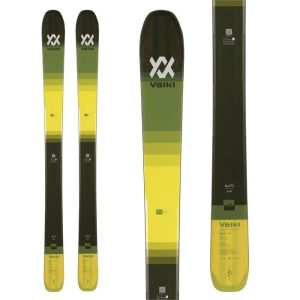
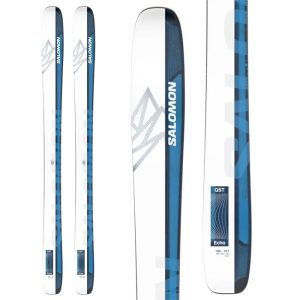

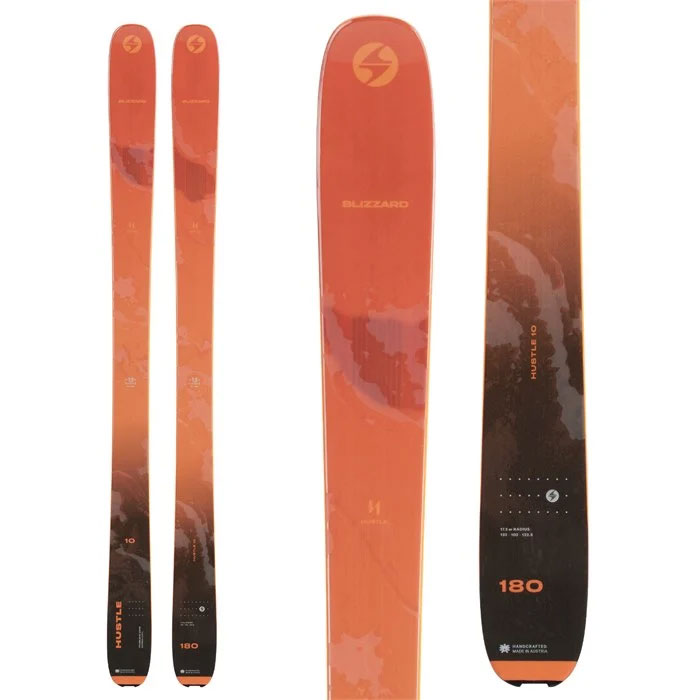
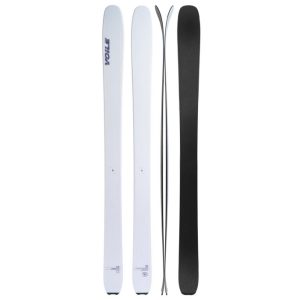
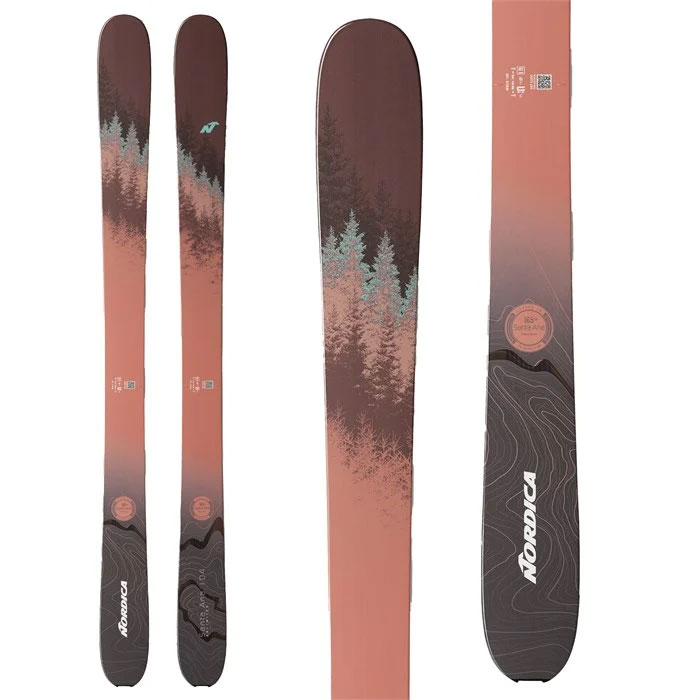
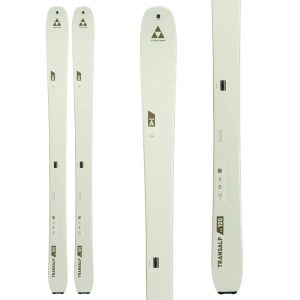
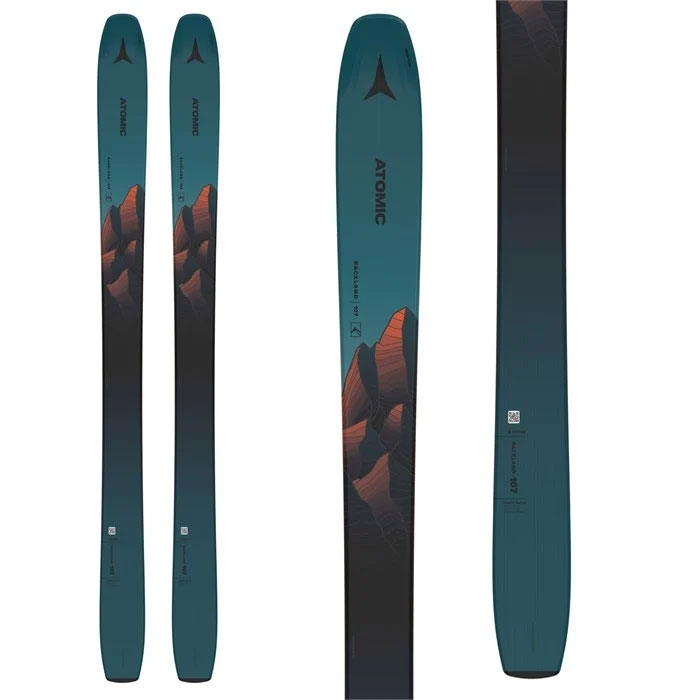
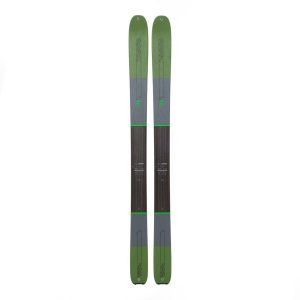
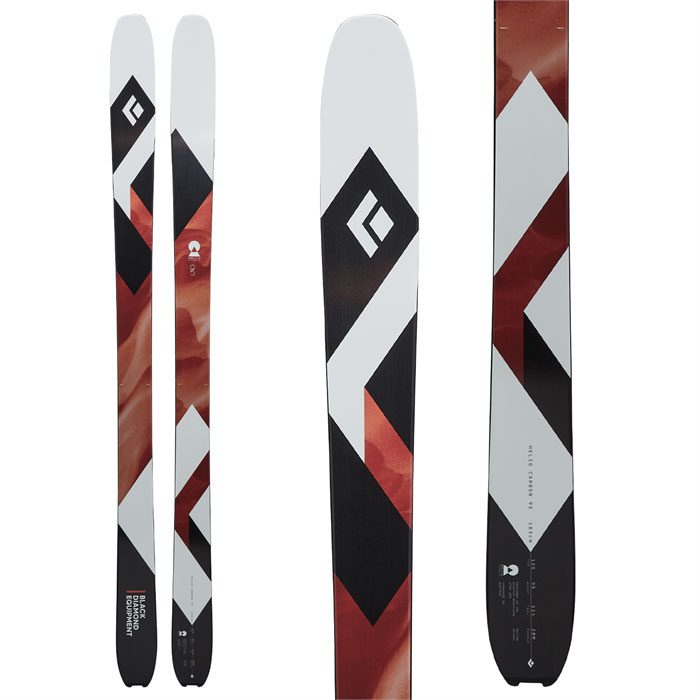

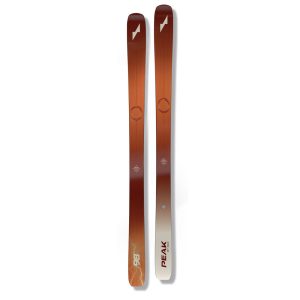
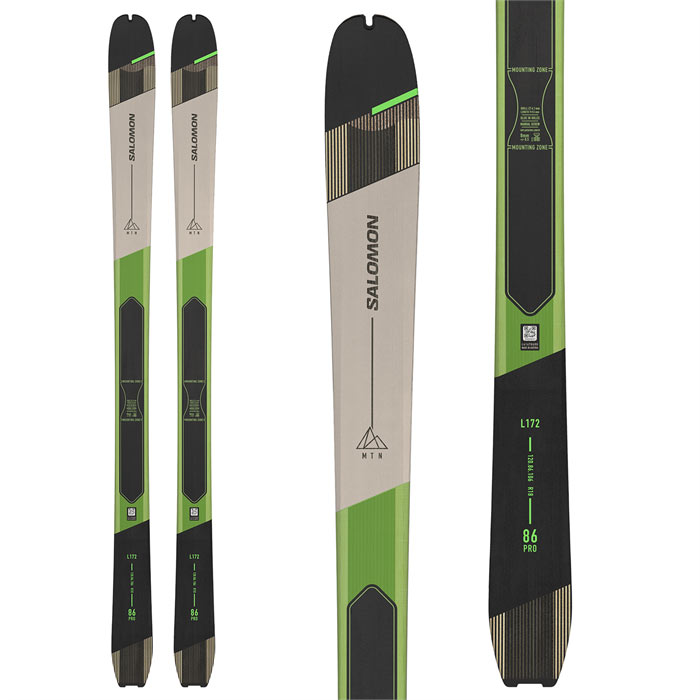

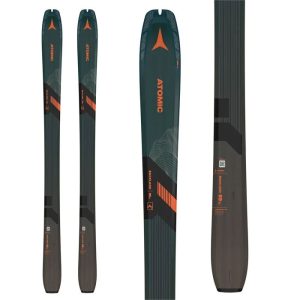
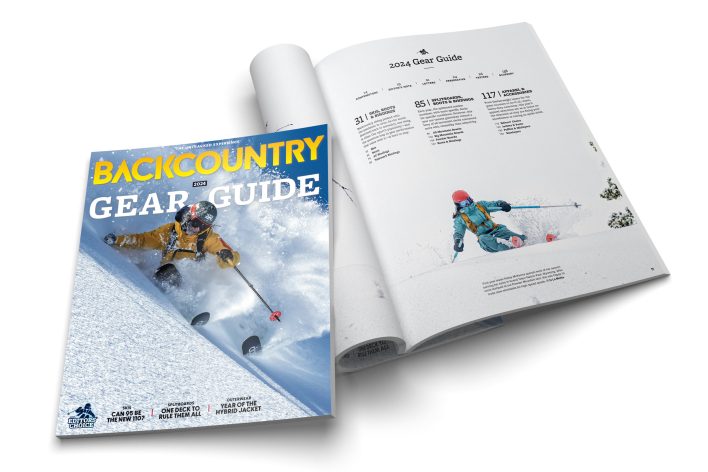








You folks are really the only ones that have reviewed the Stereo Skis Wolf MK5 currently. I am subscriber and wondering if you could share with me any and all notes from your testers on the Wolf as I am considering purchasing the ski.